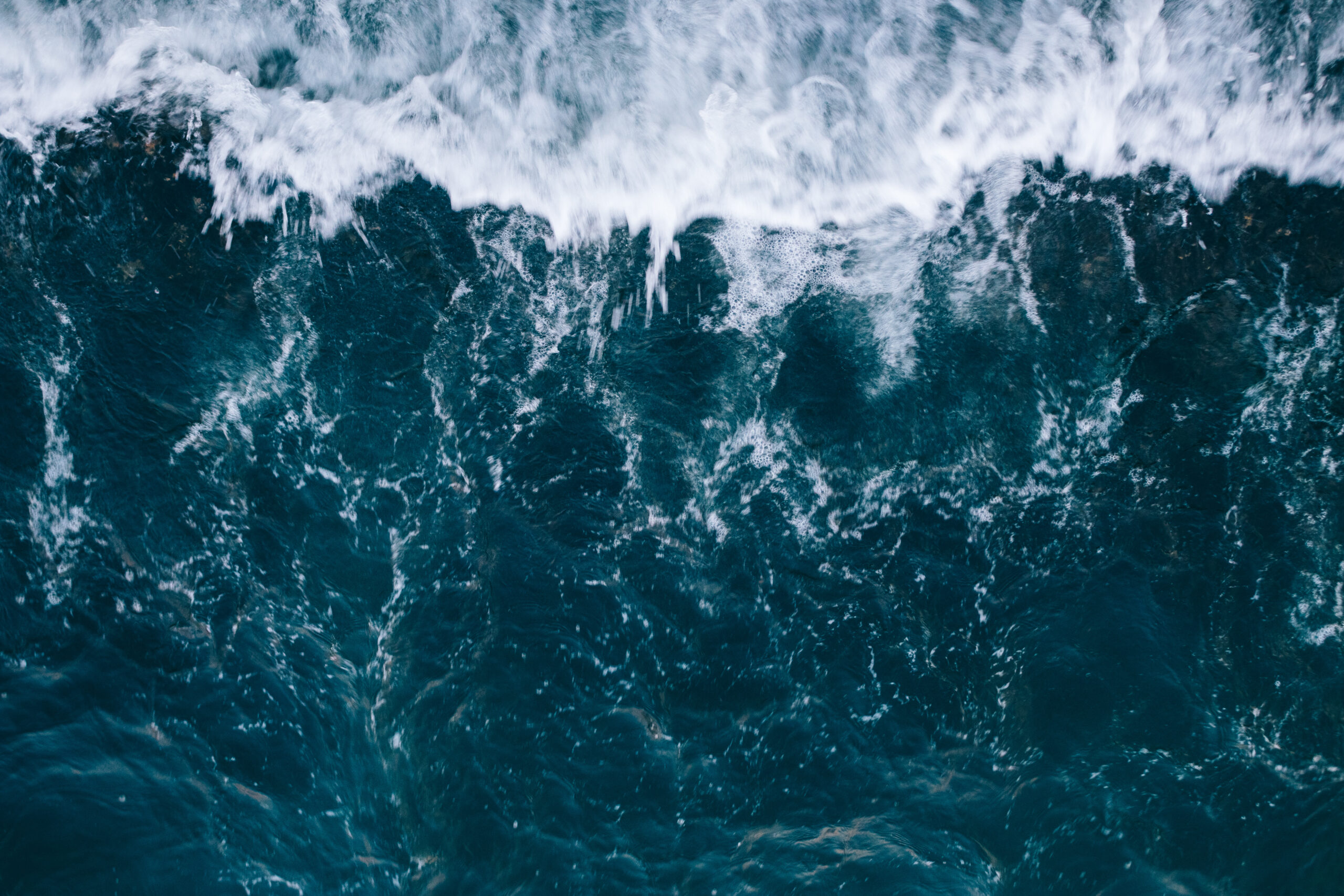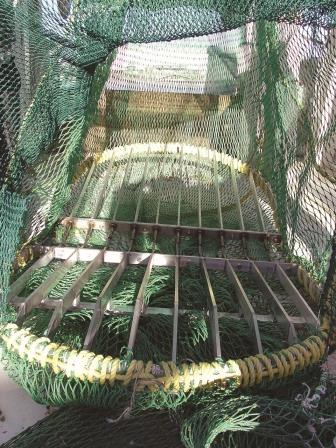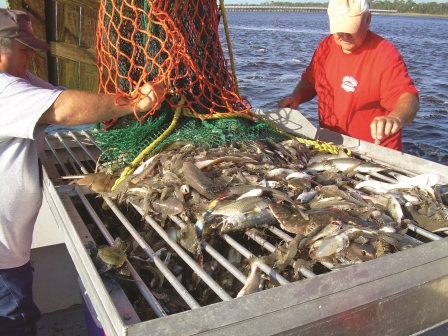NATURALIST’S NOTEBOOK: Shells, Ships and Fish: North Carolina Coastal Emblems in Your Hand
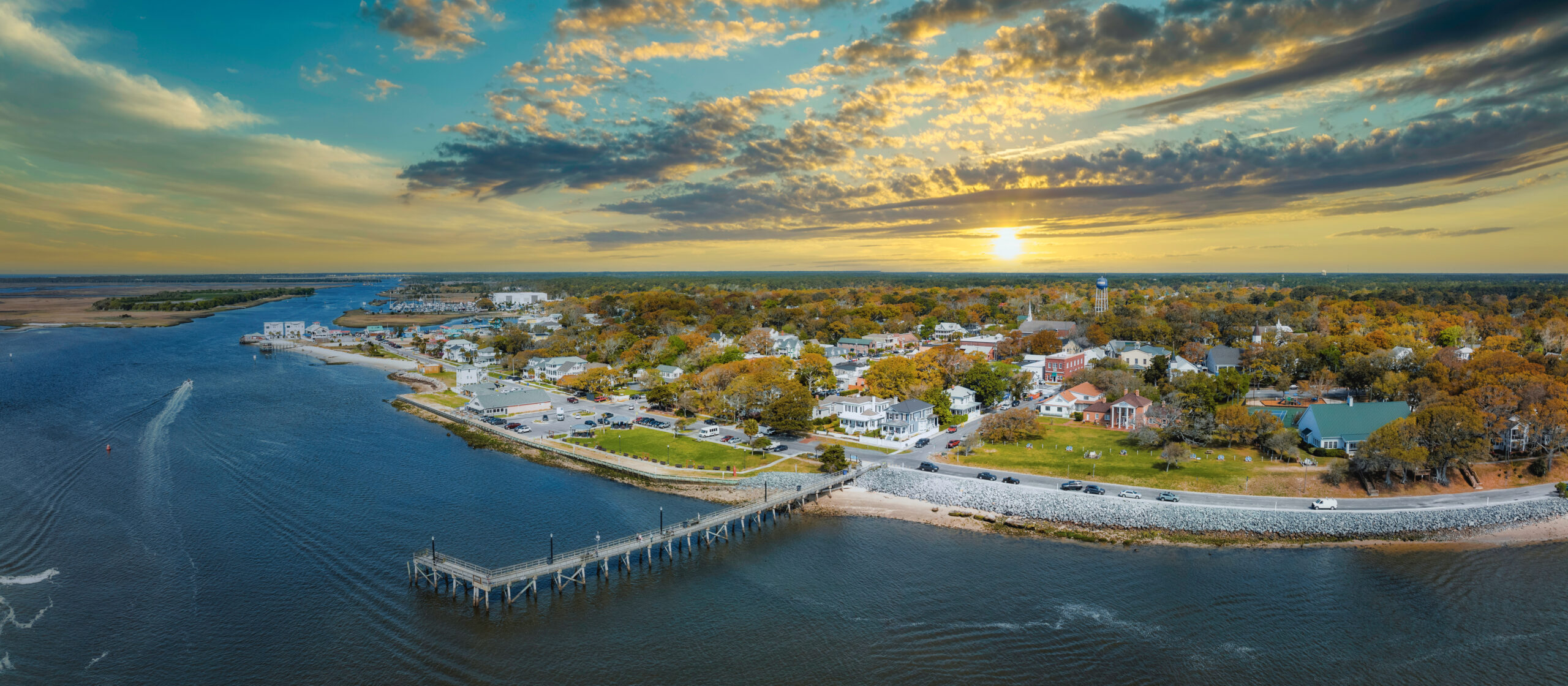
Wet-nosed, floppy-eared Plott hounds. Stock car racing. Milk.
Each is among the dozens of official state symbols designated by North Carolina’s General Assembly. The list also includes several emblems of our coast.
North Carolina designated the first state shell when it honored the Scotch bonnet — pronounced “bonay” — in 1965.
Six years later, the long-lived, prize-winning red drum was named North Carolina’s state saltwater fish. And in 1987, after more than a half century’s disappearance from the mainstream market, legislators adorned the shad boat with a title: official state historical boat.
Distinctive features and characteristics make these coastal subjects significant to our state’s culture and history.
SCOTCH BONNET
Found along the Atlantic coast from North Carolina to Uruguay, the Scotch bonnet — Phalium granulatum — is a gastropod in the same mollusk class as snails, slugs and limpets.
First catalogued in 1778, the Scotch bonnet derives its popular name from its similarity in shape to a Scottish peasant cap and its similarity in color to a Scottish tartan, or plaid.
At least in part, legislators chose the Scotch bonnet to honor our state’s Scottish settlers and thriving shellfish industry.
Species prevalence, however, was not a factor in the General Assembly’s designation.
“They are rare finds, and most beachcombers get very excited to just find one,” notes Terri Kirby Hathaway, North Carolina Sea Grant marine education specialist in Manteo. She writes an online marine education newsletter named for the state shell.
“The shell is very beautiful just after the snail dies,” Hathaway notes. Fresh shells are special prizes for beachcombers who are more likely to find old Scotch bonnets, blackened or in fragments, if any at all.
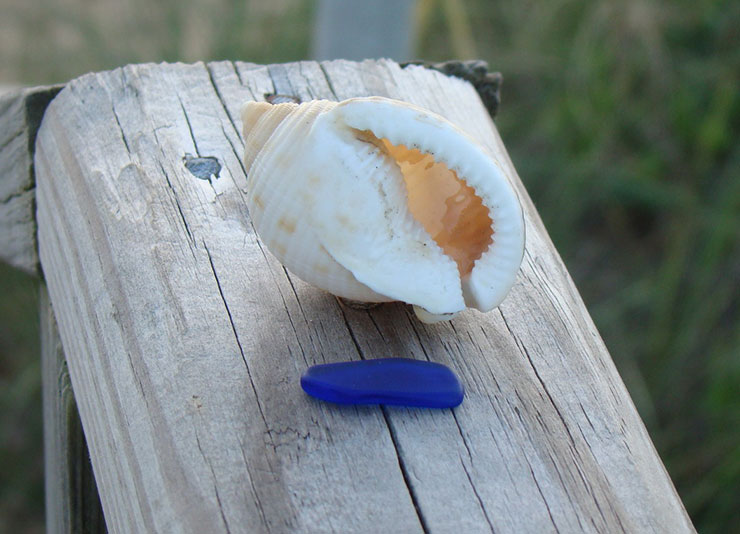
The snail living within the shell has a story of its own.
The adult snail lays small egg capsules that eventually hatch many pen-tip sized snails, explains Ben Wunderly, associate curator at the N.C. Maritime Museum in Beaufort.
“It secretes material to make its own shell. As the snail grows, it secretes more shell material to cover its soft body,” Wunderly notes. “A cross-section cut of the shell would reveal a spiral cavity where the snail’s body was hidden for safety.”
Despite its armor-like shell, the Scotch bonnet is not without predators.
“Whether by drilling though the shell itself or by prying open the operculum — [the] door-like cover for the opening of the shell — other mollusks such as cone snails, tulip snails or oyster drill snails may prey on the Scotch bonnet,” Wunderly explains.
In the Sea Grant book, Seashells of North Carolina, authors Hugh Porter and Lynn Houser note that Scotch bonnets are carnivorous, feeding on sea urchins and sand dollars, and secrete an acid to digest them.
Although rare, the Scotch bonnet shell is not an impossible find.
“I have a nice collection from someone who spends a lot of time on Cape Lookout National Seashore,” Hathaway says. “I think they’re more common there because of the remoteness of the island. Fewer people are searching out there because it’s more difficult to get to.”
RED DRUM
Red drum derive their name from their coloring and the drumming sound the males make.
“Red drum are members of the ‘drum’ family, family Sciaenidae,” explains Lee Paramore, biologist with the N.C. Division of Marine Fisheries in Manteo. “The sound is made by beating the abdominal muscle against the air bladder. The sounds are produced by the males of the species only and are used during courtship.”
Drifting through inlets, estuaries and surf zones from New Jersey and south to the Gulf of Mexico, red drum vary in hue from silver to the reddish bronze of a new penny.
Frederick Scharf, a Sea Grant fisheries researcher at the University of North Carolina Wilmington, suggests the most distinctive descriptive feature of red drum is the dark eyelike spot, or spots, called ocelli, at the base of the tail.
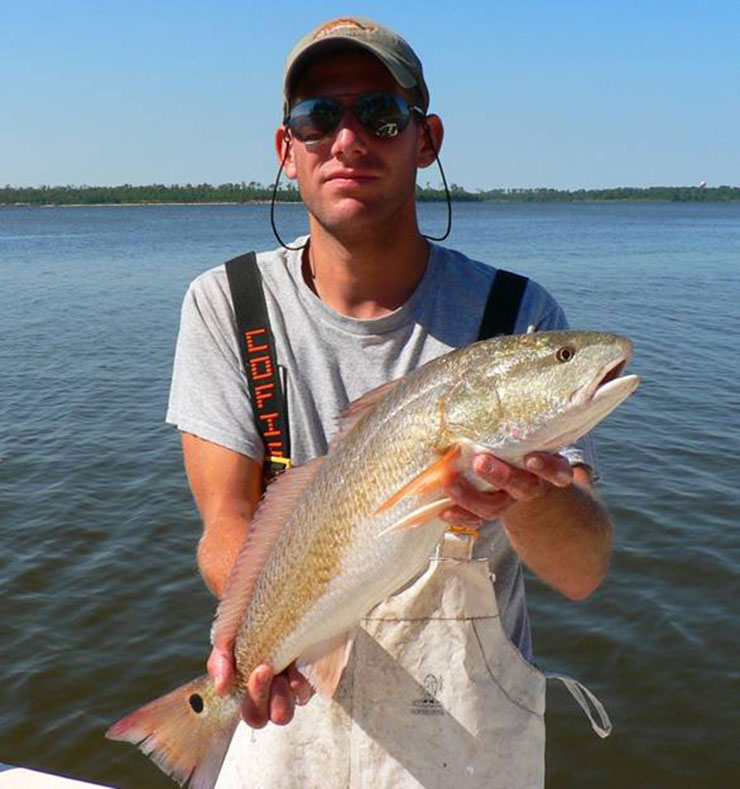
The fish are believed to have evolved the spots to direct predator attacks toward the tail rather than the head, he explains.
Red drum thrive in a wide range of habitats throughout their lives. “During the first two to three years of life, red drum are found mainly in shallow, estuarine habitats,” Scharf says.
Shorelines give small red drum protection from predators and opportunities to feed on some of their favorite prey, such as small crabs and shrimp, Paramore notes.
In recent work funded by the N.C. Blue Crab and Shellfish Research Program, Scharf and his colleagues estimated the consumption and feeding rates of juvenile red drum during their first two years of life.
“Basically, we found that red drum diets in the estuary consist mainly of penaeid shrimps, blue crab and juvenile fish,” Scharf explains. “Consumption rates range from 5 to 15 percent of their body weight per day.”
Scharf notes that these findings indicate red drum may be capable of depleting their prey populations during some years.
In an ongoing Sea Grant project, Scharf and others examine how the mortality of juvenile red drum relates to cold stress with the passage of harsh winters. The team suspects severe winters may cause high levels of juvenile red drum mortality in subsequent years.
In contrast to juvenile red drum, adults can withstand more rugged water conditions. “As they age, they prefer deeper habitats,” Scharf explains. “They tolerate a wide range of salinities and are found from the ocean to nearly fresh water.”
Also significant is the potential life span and reproductive capacity of the fish. They can live 50 years or more, after having reached sexual maturity by age four, notes Paramore, who has spent the last 15 years serving as DMF’s species lead for red drum.
“Once red drum reach maturity, they tend to spawn each year throughout their life,” Paramore adds. Unlike other species, a red drum’s capacity to produce eggs tends to increase with age.
Red drum currently prosper in North Carolina waters, but this was not always the case. Severe overfishing from the early 1980s through the mid-1990s resulted in red drum population declines.
Over the past 15 years, red drum have enjoyed a strong recovery with an N.C. Fisheries Management Plan in place. “Regulations in the early 1990s, and then a second round of more stringent regulations enacted in 1998 as part of the N.C. Red Drum FMP, have had a positive impact on the red drum population,” Paramore says.
“Red drum are currently regulated by an 18-to-27-inch size limit, a one-fish recreational bag limit and a 10-fish commercial trip limit,” he explains. Commercial fishermen are barred from targeting red drum but may retain up to 10 if caught incidental to other target species.
Paramore considers the General Assembly’s decision to designate the red drum as the state saltwater fish an excellent choice.
“Red drum have traditionally been very abundant in our waters all the way back to colonial times,” he explains. “Our state is renowned for producing trophy-sized red drum, particularly for anglers fishing in the surf along the Outer Banks.”
By trophy-sized fish, he means catches such as the 94-pound, 2-ounce red drum caught off Hatteras that won state records for red drum and world records for all tackle in 1984.
“North Carolina has produced 10 out of 16 current line-class world records for red drum. Another interesting fact is that the oldest red drum aged to date was taken in North Carolina and was 62-years-old,” Paramore adds.
“Under current conditions, red drum stocks in North Carolina are considered healthy and should remain that way into the future,” Paramore predicts.
SHAD BOAT
Despite its graceful appearance, the shad boat, commonly referred to as the “pickup truck” of watercraft, navigated our not-so-tranquil sounds in the late 19th and early 20th centuries.
In the industrial hustle and bustle of the 1880s, North Carolina commercial fisheries and processing plants wanted to maximize their fish supply. “Fishing, to a large extent in the whole state, was moving from subsistence and feeding a local market to a more industrial phase,” explains Paul Fontenoy, curator of maritime research at the N.C. Maritime Museum in Beaufort.
The primary type of vessel used throughout the 1870s was the kunner, a boat built by hollowing out large logs. By the 1880s, limits on available log size and a rise in demand for larger haul capacities resulted in calls for a new model.
Enter George Washington Creef, the noted Roanoke Island ship builder.
In the 1880s, Creef designed and built the first shad boat, a sailboat constructed with frames rather than dug out of logs. The new construction method allowed for a wider hull.

Creef designed his boat, named for the shad fish, for North Carolina’s sounds and rivers. For that reason, it displays several design oddities.
Fontenoy identifies the sweeping high rise of the bow as the feature that gives the shad its reputation for seaworthiness and stability in the Albemarle Sound’s rather unstable waters.
“Because the sound is relatively shallow, and because it’s a wide expanse of water, you get short, steep waves,” Fontenoy explains. “When you see [shad boats] you think they have way too much rise in the bow, but they accommodate the conditions of the Albemarle Sound.”
The addition of a topsail above the mainsail and jib was another successful shad feature.
“The topsail allowed [the fishermen] to catch enough wind off the tops of trees to put the boat back into the open water where the main and jib would take over,” explains Robbie Putnam, curator at the Roanoke Island Maritime Museum in Manteo.
Putnam notes the added topsail especially benefited anglers in the sound as they fished near the shoreline where trees blocked the wind from the mainsail and jib.
Despite its large haul capacity and design features tailored to navigate our rivers and sounds, shad boat production halted in the 1930s.
“The demise of the design was probably a mixture of new building materials and methods developed over the years,” Putnam explains. He also notes the expansion of engine use in the first half of the 20th century as another cause.
“Engines really changed the design of all boats,” Putnam reflects.
Although they disappeared from the mainstream market, original shad boats are still displayed at various locations, including the Roanoke Island Festival Park, the Currituck Heritage Park Maritime Museum in Corolla, the Museum of the Albemarle in Elizabeth City and the Port O’Plymouth Maritime Museum.
The Roanoke Island Maritime Museum showcases the Ella View, an original shad boat built in the 1880s by Creef. During the summer, you can take a ride out to Roanoke Island Festival Park on a carefully constructed shad boat replica.
Visit the following websites to learn more about these and other symbols of North Carolina:
» ncpedia.org/symbols
» portal.ncdenr.org/web/mf/
» www.ncmuseumofhistory.org
» www.gowildnc.org/history-shad-boats.aspx
» www.ncshellclub.com/NCStateShell.htm
This article was published in the Winter 2012 issue of Coastwatch.
2For contact information and reprint requests, visit ncseagrant.ncsu.edu/coastwatch/contact/.
- Categories:
